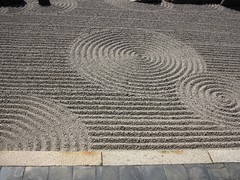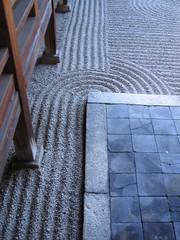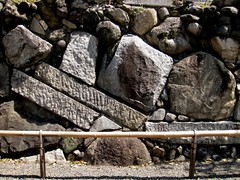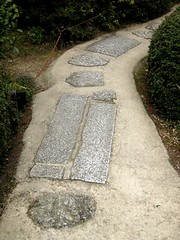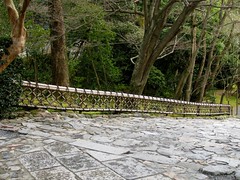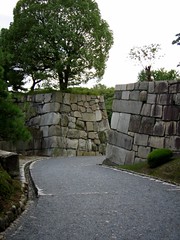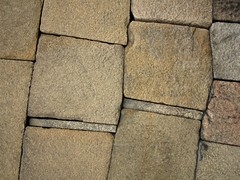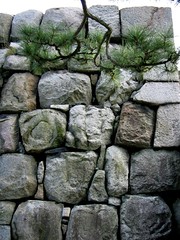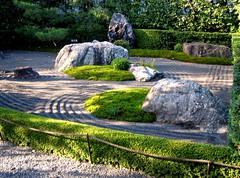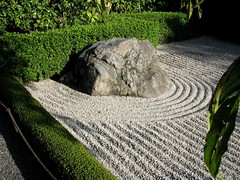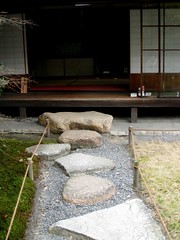Sand detail at pavement
4/01/2010
rubble wall (Taka-ishigaki).jpg
Shosei-in (Kikoku-tei [the Orange Grove])
Kikokutei is the name of a detached residence belonging to Higashi Hongan-ji Temple.
Kikokutei is the name of a detached residence belonging to Higashi Hongan-ji Temple.
path.JPG
Shoren-in, is one of the five Monzeki temples of the Tendai sect in Kyoto and was formerly part of the Enryaku-ji Temple on Mt. Hiei.
shoden-ji bowl.jpg
We were the only people, besides a monk, the day we visited. It was raining and the monk had set this bowl outside to catch the water. Not strictly a religious fountain, but close.
Ryoan-ji, fence & Pilgrim's Path.jpg
A gorgeous exit. This fence is known as ryouanjigaki, 龍安寺垣, and is characterized by thick split bamboo that cross diagonally to form a diamond pattern. These are secured by a base made of two heavy split bamboo pieces and a top rail of split bamboo that has a larger diameter than the cross-members. The rail is crowned with a coping of heavy split bamboo. Jaanus
Ryoan-ji (they have their own website). The temple site was originally a Fujiwara family estate, then passed to the Hosokawa clan. Hosokawa Katsumoto lived there before the Ōnin War and willed the war-ravaged property to a Rinzai Zen sect after his death.
Ryoan-ji (they have their own website). The temple site was originally a Fujiwara family estate, then passed to the Hosokawa clan. Hosokawa Katsumoto lived there before the Ōnin War and willed the war-ravaged property to a Rinzai Zen sect after his death.
3/31/2010
Murin-an entry.jpg
Murin-an is the former villa of Yamagata Aritomo, statesman of the Meiji and Taisho periods. The estate was constructed in 1894 as a stroll garden, designed by Yamagata, around streams fed by the Lake Biwa Canal and incorporating Higashiyama (the Eastern Hills) as borrowed scenery. Along with Shisendo-do, Murin-an provides an opportunity to see an elegant private family residence--as opposed to temple and garden. In 1941 the property was donated to the city of Kyoto which holds it as a cultural asset.
Subscribe to:
Posts (Atom)
